- Home
- Tony Hillerman
A Thief of Time Page 13
A Thief of Time Read online
Page 13
“From what we know, from what Friedman-Bernal told other anthropologists, she seems to have believed that she could find the place to which this potter moved when the Chaco civilization collapsed,” Leaphorn said.
“About right,” Ms. Marcy said. “She said she thought this pot was the key. She said she had come across several shards, and one complete pot, which she was sure came from a late phase in this potter’s work—an extension and refinement and maturing of her techniques. The pot she’d seen in our catalog seemed to be exactly identical to this work. So she wanted to study it. She wanted to know where she could go to see it, and she wanted to see our documentation.”
“Did you tell her?”
“I told her our policy.”
“So you didn’t tell her who had bought it? Or how to contact the buyer?”
Ms. Marcy sighed, allowed her expression to show a flash of impatience.
“I told her the same thing I am telling you. One of the reasons people have been dealing with Nelson’s for more than two hundred years is because of our reputation. They know they can depend, absolutely and without a qualm of doubt, on Nelson’s keeping transactions in confidence.”
Leaphorn leaned forward.
“Dr. Friedman-Bernal flew back to Albuquerque after she talked to you. Then she drove back to Chaco Canyon, where she lives and works. The following Friday she got up very early, put her sleeping bag into her car, and drove away. She’d told her friends she’d be gone for a day or two. We suspect that somehow she found out where this pot had come from and went to see if she could find something to prove it. Probably to see if there were other such pots, or potsherds, at the place.”
He leaned back, folded his hands across his chest, wondering if this would work. If it didn’t, he was near a dead end. There was Chee, of course. He’d asked Chee to find the Reverend Slick Nakai—to learn from Nakai everything the man knew about where those damned pots were coming from. Chee seemed interested. Chee would do his best. But how smart was Chee? He should have waited, done it himself, not risked having it all screwed up.
“She vanished,” Leaphorn said. “No trace of the woman, or car, or anything. Not a word to anyone. As if Eleanor Friedman-Bernal had never existed.”
Ms. Marcy picked up the photograph and studied it. “Maybe she just went away,” she said, looking up at Leaphorn. “You know. Too much work. Too much stress. Suddenly you just want to say to hell with it. Maybe that was it.” She said it as a woman who knows the feeling.
“Possibly,” Leaphorn said. “However, the evening before she left she spent a lot of time fixing a dinner. Marinated the meat entrée, all that. The professor she had worked with was coming in from Albuquerque. She fixed this fancy dinner and put it in the refrigerator. And at dawn the next morning she put her sleeping bag and things like that in her car and drove away.”
Ms. Marcy considered. She took the picture of Eleanor Friedman as a bride from the desk and looked at it again.
“Let me see what I can do,” she said. She picked up the telephone. “Will you wait outside just a moment?”
The reception room had no view of the rain. Just walls displaying abstract prints, and a receptionist in whom Leaphorn’s damp Navajo Tribal Police uniform had aroused curiosity. He sat against the wall, glancing through an Architectural Digest, aware of the woman staring at him, wishing he had worn civilian clothes. But maybe it wasn’t the uniform. Maybe it was the damp Navajo inside it.
Ms. Marcy came out in a little less than ten minutes. She handed Leaphorn a card. It bore a name, Richard DuMont, and an address on East Seventy-eighth Street.
“He said he would see you tomorrow morning,” she said. “At eleven.”
Leaphorn stood. “I appreciate this,” he said.
“Sure,” she said. “I hope you’ll let me know. If you find her I mean.”
Leaphorn spent the rest of the afternoon prowling through the Museum of Modern Art. He sat, finally, where he could see the patio of sculpture, the rain-stained wall behind it, and the rainy sky above. Like all dry-country people, Leaphorn enjoyed rain—that rare, longed for, refreshing blessing that made the desert bloom and life possible. He sat with his head full of thoughts and watched the water run down the bricks, drip from the leaves, form its cold pools on the flagstones, and give a slick shine to Picasso’s goat.
The goat was Leaphorn’s favorite. When they were young and he was attending the FBI Academy, he had brought Emma to see New York. They had discovered Picasso’s goat together. He had already been staring at it when Emma had laughed, and plucked at his sleeve, and said: “Look. The mascot of the Navajo Nation.”
He had an odd sensation as he remembered this, as if he could see them both as they had been then. Very young, standing by this glass wall looking out into the autumn rain. Emma, who was even more beautiful when she laughed, was laughing.
“Perfect for us Dineh,” she’d said. “It’s starved, gaunt, bony, ugly. But look! It’s tough. It endures.” And she had hugged his arm in the delight of her discovery, her face full of the joy, and the beauty, that Leaphorn had found nowhere else. And of course, it was true. That gaunt goat would have been the perfect symbol. Something to put on a pedestal and display. Miserable and starved, true enough. But it was also pregnant and defiant—exactly right to challenge the world at the entrance of the ugly octagonal Tribal Council meeting hall at Window Rock. Leaphorn remembered their having coffee at the museum café and then walking out and patting the goat. The sensation came back to him now—wet, cold metal slick under his palm—utterly real. He got up and hurried out of the museum into the rain, leaving the umbrella hanging forgotten on the chair.
Leaphorn took a cab to the Seventy-eighth Street address, got there a quarter of an hour early, and spent the time prowling the neighborhood—a territory of uniformed doormen and expensive dogs walked by persons who seemed to have been hired for the job. He rang the door chimes at eleven exactly. He waited on the steps, looking at the sky down the street. It would rain again, and soon—probably before noon. An old man, stooped and gray in a wrinkled gray suit, opened the door and stood silently, looking at him patiently.
“My name is Leaphorn,” he said. “I have an appointment with Richard DuMont.”
“In the study,” the man said, motioning Leaphorn in.
The study was a long, high-ceilinged room down a long, high-ceilinged hall. A man in a dark blue dressing gown was sitting at the end of a long library table. Light from a floor lamp beside his chair reflected off the white of a breakfast cloth, and china, and silver.
“Ah, Mr. Leaphorn,” the man said, smiling. “You are most punctual. I hope you will excuse me for not getting up to greet you.” He tapped the arms of the wheelchair in which he was sitting. “And I hope you will join me for some breakfast.”
“No thank you,” Leaphorn said. “I’ve eaten.”
“Some coffee, then?”
“I have never refused coffee. Never will.”
“Nor I,” DuMont said. “Another of my vices. But seat yourself.” He gestured toward a blue plush chair. “The woman at Nelson’s told me you are hunting a missing woman. An anthropologist. And that murder is involved.” DuMont’s small gray eyes peered at Leaphorn, avid with interest. Unusual eyes set in a pinched, narrow face under eyebrows almost identical in color to his pale skin. “Murder,” he repeated, “and a missing woman.” His voice was clear, precise, easy to understand. But like his face it was a small voice. Any background noise would bury it.
“Two pot hunters were killed,” Leaphorn said. Something about DuMont was unpleasant. Too much interest? But interest in such a man seemed natural enough. After all, he was a collector. “Including the man who found my pot,” DuMont said, with what seemed to Leaphorn to be a sort of pleasure. “Or so that woman at Nelson’s told me.”
“We think so,” Leaphorn said. “Ms. Marcy told me you would be willing to let me see the documentation he sent in. We want to know where he found the pot.”
&n
bsp; “The document,” DuMont said. “Yes. But tell me how the man was killed. How the woman is missing.” He raised his arms wide apart, his small mouth grinning. “Tell me all of that.”
Behind DuMont, on both sides of a great formal fireplace, shelves formed the wall. The shelves were lined with artifacts. Pots, carved stone images, baskets, fetishes, masks, primitive weapons. Just behind the man, a pedestal held a massive stone head—Olmec, Leaphorn guessed. Smuggled out of Mexico in defiance of that country’s antiquities act.
“Mr. Etcitty and a companion were digging up an Anasazi ruin, apparently collecting pots. Someone shot them,” Leaphorn said. “An anthropologist named Friedman-Bernal was specializing in this sort of ceramics. In fact, she was interested in this pot you bought. She disappeared. Left Chaco Canyon—she worked there—for a weekend and hasn’t come back.”
Leaphorn stopped. He and DuMont looked at each other. The stooped, gray man who had admitted Leaphorn appeared at his elbow, placed a small table beside his chair, spread a cloth upon it, put a silver tray on the cloth. The tray held a cup of paper-thin china sitting on a translucent saucer, a silver pot from which steam issued, two smaller silver containers, and a silver spoon. The gray man poured coffee into Leaphorn’s cup and disappeared.
“One doesn’t buy merely the object,” DuMont said. “One wants what goes with it. The history. This head, for example, came out of the jungles in northern Guatemala. It had decorated the doorway to a chamber in a temple. The room where captives were held until they were sacrificed. I’m told the Olmec priests strangled them with a cord.”
DuMont covered the lower part of his small face with his napkin and produced a small cough, his avid eyes on Leaphorn.
“And this Anasazi pot of yours. Why is it worth five thousand dollars?” He laughed, a small, tinkling sound. “It’s not much of a pot, really. But the Anasazi! Such mysterious people. You hold this pot, and think of the day it was made. A civilization that had grown a thousand years was dying.” He stared into Leaphorn’s eyes. “As ours is surely dying. Its great houses were standing empty. No more great ceremonials in the kivas. This is about when my pot was made—so my appraisers tell me. Right at the end. The twilight. In the dying days.”
DuMont did something at the arm of his wheelchair and said: “Edgar.”
“Yes sir.” Edgar’s voice seemed to come from under the table.
“Bring me that pot we bought last month. And the documents.”
“Yes sir.”
“So stories are important to me,” DuMont said to Leaphorn. “What you could tell me has its value here. I show my new pot to my friends. I tell them not just of the Anasazi civilization, but of murder and a missing woman.” He grinned a small, prim grin, showing small, perfect teeth.
Leaphorn sipped his coffee. Hot, fresh, excellent. The china was translucent. To the right of DuMont a row of high windows lined the wall. The light coming through them was dim, tinted green by the vines that covered them. Rain streamed down the glass.
“Did I make my point?” DuMont said.
“I think so,” Leaphorn said.
“Tit for tat. You want information from me. In exchange it seems to me only fair that you give me my story. The story to go with my pot.”
“I did,” Leaphorn said.
DuMont raised two white hands, fluttered them. “Details, details, details,” he said. “All the bloody details. The details to pass along.”
Leaphorn told him the details. How the bodies were found. How the men had been killed. Who they were. He described the scene. He described the bones. DuMont listened, rapt.
“…and there we are,” Leaphorn concluded. “No leads, really. Our missing woman might be a lead to the killer. More likely she’s another victim. But it’s all vague. We know just that she was interested in the same pots. Just that she’s missing.”
Edgar had returned early in this account and stood beside DuMont, holding a pot and a manila folder. The pot was small, about the size of a man’s head. A little larger than DuMont’s skull.
“Hand the pot to Mr. Leaphorn,” DuMont said. “And the documents, please.”
Edgar did so. And stood there, stooped and gray, his presence making Leaphorn edgy. Why didn’t the man sit down? Leaphorn placed the pot carefully on the table, noticing the smooth feel of the glazing, aware that it had nothing to tell him. He opened the folder.
It contained what appeared to be two bills of sale, one from Harrison Houk to Nelson’s and one from Nelson’s to DuMont, and a form with its blanks filled in by an awkward hand. It was signed by Jimmy Etcitty.
Leaphorn checked the date. The previous June. He checked the space marked “Place of recovery.” The entry read:
About eight or ten miles down San Juan from Sand Island. From mouth of canyon on north side of river go up the canyon about five and a half miles to the place where there are three ruins on the left side of the canyon at a low level. Right there by the lower ruin are a bunch of pictures of Anasazi yei figures and one looks like a big baseball umpire holding up a pink chest protector. On the north side of the canyon one of the ruins is built against the cliff on the shelf above the canyon bottom. Above it on the higher shelf there is a cave under the cliff with a ruin built in it, and above that in a smaller cave there is another ruin. All these ruins are on private land under lease to my friend Harrison Houk of Bluff, Utah. This pot came from a trench beside the south wall of the ruin against the cliff. It was faceup, with three other pots, all broken, and a skeleton, or part of a skeleton. When found, the pot had nothing but dirt in it.
Leaphorn was surprised at the intensity of his disappointment. It was exactly what he should have expected. He checked the other blanks and found nothing interesting. DuMont was watching him, grinning.
“A problem?”
“A little case of lying,” Leaphorn said.
“Just what Dr. Friedman said.” DuMont chuckled. “False, false, false.”
“You talked to Dr. Friedman?”
“Just like this,” DuMont said, delighted with Leaphorn’s amazement. “Your missing lady was right here. In that same chair. Edgar, was she drinking from the same cup?”
“I have no idea, sir,” Edgar said.
“Same questions, anyway.” DuMont gestured. “Fascinating.”
“How did she find you?”
“As you did, I presume. Through Nelson’s. She called, and identified herself, and made an appointment.”
Leaphorn didn’t comment. He was remembering her note. “Call Q!” Ellie seemed to have had a pipeline into the auction house that got her past Ms. Marcy.
“She said the certification was false? The location?”
“She said that canyon isn’t where Mr…. Mr….”
“Etcitty,” Edgar said.
“Where Mr. Etcitty said it was.” DuMont laughed. “Running the wrong way, she said. Too far down the river. Things like that.”
“She was right,” Leaphorn said. If that false location had an effect on DuMont’s five-thousand-dollar pot, it had no effect on his humor. He was grinning his small white grin.
“She was quite upset,” he said. “Disappointed. Are you?”
“Yes,” Leaphorn said. “But I shouldn’t be. It’s exactly what I should have expected.”
“Edgar has made you a copy of that,” DuMont said. “To take with you.”
“Thank you,” Leaphorn said. He pushed himself out of the chair. He wanted to get out of this room. Away. Out into the clean rain.
“And Edgar will give you my card,” DuMont said from behind him. “Call me with all the details. When you find her body.”
THIRTEEN
FINDING THE REVEREND SLICK NAKAI had not been easy. At the Nageezi site Chee found only the trampled place where the revival tent had stood, and the trash left behind. He asked around, learned that Nakai was known at the Brethren Navajo Mission. He drove to Escrito. The belagana at the mission there knew of Nakai but not his whereabouts. If he had scheduled a revival
around there, they hadn’t heard of it. Must be a mistake. Chee left, sensing that he wasn’t alone in his disapproval of Slick Nakai. At Counselors Trading Post, where people tend to know what’s happening on the north side of the Checkerboard Reservation, he hung around until he found someone who knew of a family not only fervently following the Jesus Road, but doing so as prescribed by the tenets of Nakai’s sect. It was the family of Old Lady Daisy Manygoats. The Manygoats outfit, unfortunately, lived way over by Coyote Canyon. Chee drove to Coyote Canyon, stopped at the chapter house, got directions down a road that was bad even by reservation standards, and found nobody at home at the Manygoats place except a boy named Darcy Ozzie. Yes, Darcy Ozzie knew about the Reverend Slick Nakai, had in fact gone to his recent revival over at Nageezi.
“They say he was going to preach over between White Rock and Tsaya, over there by the mountains,” the boy said, indicating west in the Navajo fashion by a twist of his lips. “And then when he was finished there, he was going way over into Arizona to have a revival over there by Lower Greasewood. Over there south of the Hopi Reservation.”
So Chee drove up the Chuska Valley toward Tsaya, with the Chuska Range rising blue to his left and autumn asters forming two lines of color along the opposite sides of the cracked old asphalt of U.S. 666, and snakeweed and chamisa coloring the slopes mottled tan-yellow-gold and the November sky dark blue overhead.
He had quit thinking of Slick Nakai about halfway between Nageezi and Coyote Canyon, having exhausted every possible scenario their meeting might produce. Then he considered Mary Landon. She loved him, he concluded. In her way. But there was love, and then there was love. She would not change her mind about living her life on the reservation. And she was right. Lacking some very basic change in Mary, she would not be happy raising their children here. He wanted Mary to neither change nor be unhappy. Which led him back to himself. She would marry him if he left the reservation. And he could do that. He’d had offers. He could go into federal law enforcement. Work somewhere where their children could go to school with white kids and be surrounded by white culture. Mary would be happy. Or would she? He could still be a Navajo in the sense of blood, but not in the sense of belief. He would be away from family and the Slow Talking Dineh, the brothers and sisters of his maternal clan. He would be outside of Dineh Bike’yah—that territory fenced in by the four sacred mountains within which the magic of the curing ceremonials had its compulsory effect. He would be an alien living in exile. Mary Landon would not enjoy life with that Jim Chee. He could not live with an unhappy Mary Landon. It was the conclusion he always eventually reached. It left him with a sense of anger and loss. That, in turn, moved his thoughts to something else.

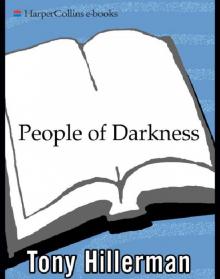 People of Darkness
People of Darkness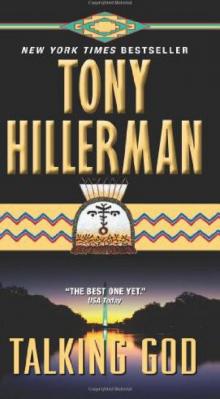 Talking God jlajc-9
Talking God jlajc-9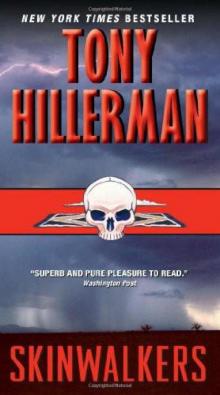 Skinwalkers jlajc-7
Skinwalkers jlajc-7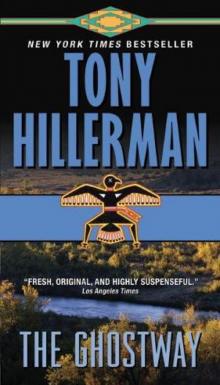 The Ghostway jlajc-6
The Ghostway jlajc-6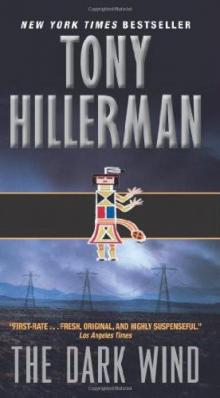 The Dark Wind jlajc-5
The Dark Wind jlajc-5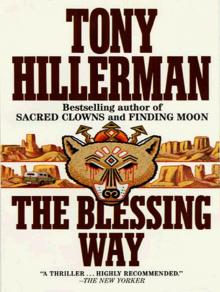 The Blessing Way
The Blessing Way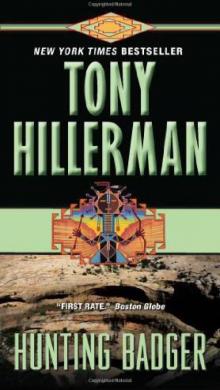 Hunting Badger jlajc-14
Hunting Badger jlajc-14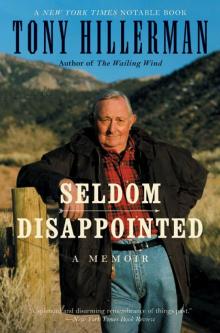 Seldom Disappointed: A Memoir
Seldom Disappointed: A Memoir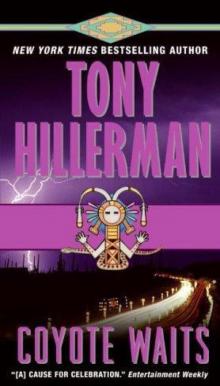 Coyote Waits jlajc-10
Coyote Waits jlajc-10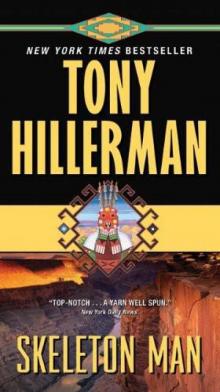 Skeleton Man jlajc-17
Skeleton Man jlajc-17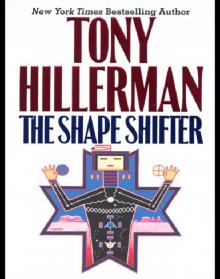 The Shape Shifter
The Shape Shifter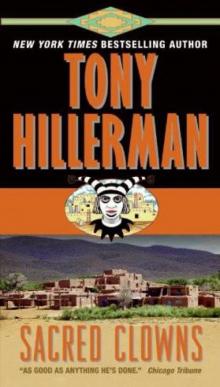 Sacred Clowns jlajc-11
Sacred Clowns jlajc-11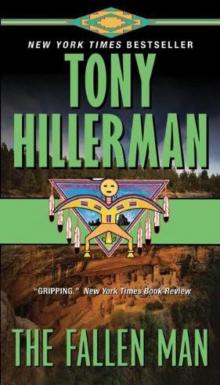 The Fallen Man jlajc-12
The Fallen Man jlajc-12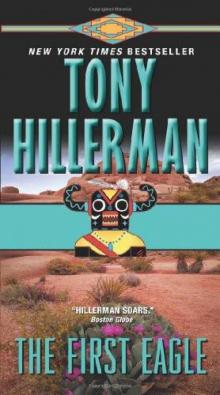 The First Eagle jlajc-13
The First Eagle jlajc-13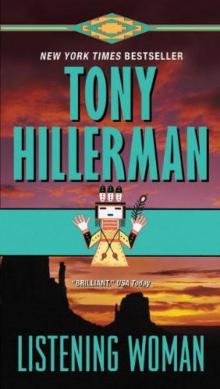 Listening Woman jlajc-3
Listening Woman jlajc-3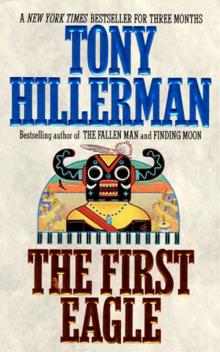 The First Eagle
The First Eagle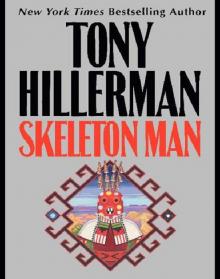 Skeleton Man
Skeleton Man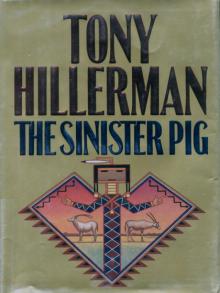 The Sinister Pig jlajc-16
The Sinister Pig jlajc-16 People of Darkness jlajc-4
People of Darkness jlajc-4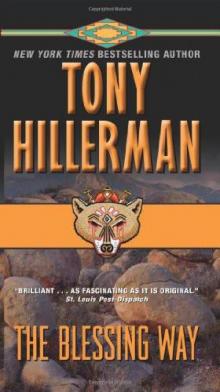 The Blessing Way jlajc-1
The Blessing Way jlajc-1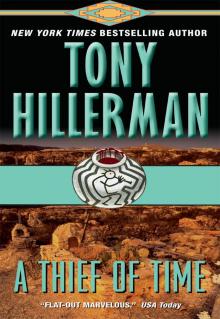 A Thief of Time
A Thief of Time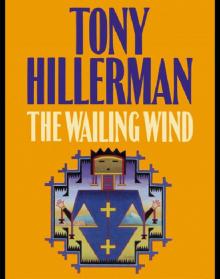 The Wailing Wind
The Wailing Wind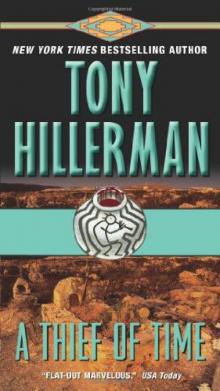 A Thief of Time jlajc-8
A Thief of Time jlajc-8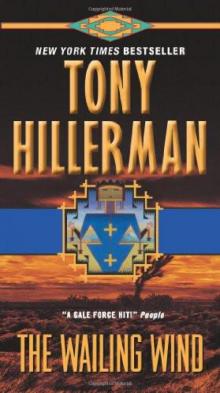 The Wailing Wind jlajc-15
The Wailing Wind jlajc-15 The Shape Shifter jlajc-18
The Shape Shifter jlajc-18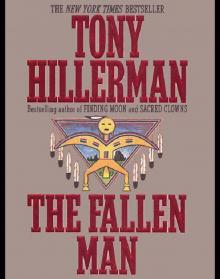 The Fallen Man
The Fallen Man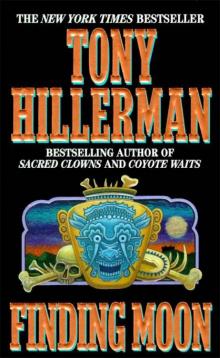 Finding Moon
Finding Moon